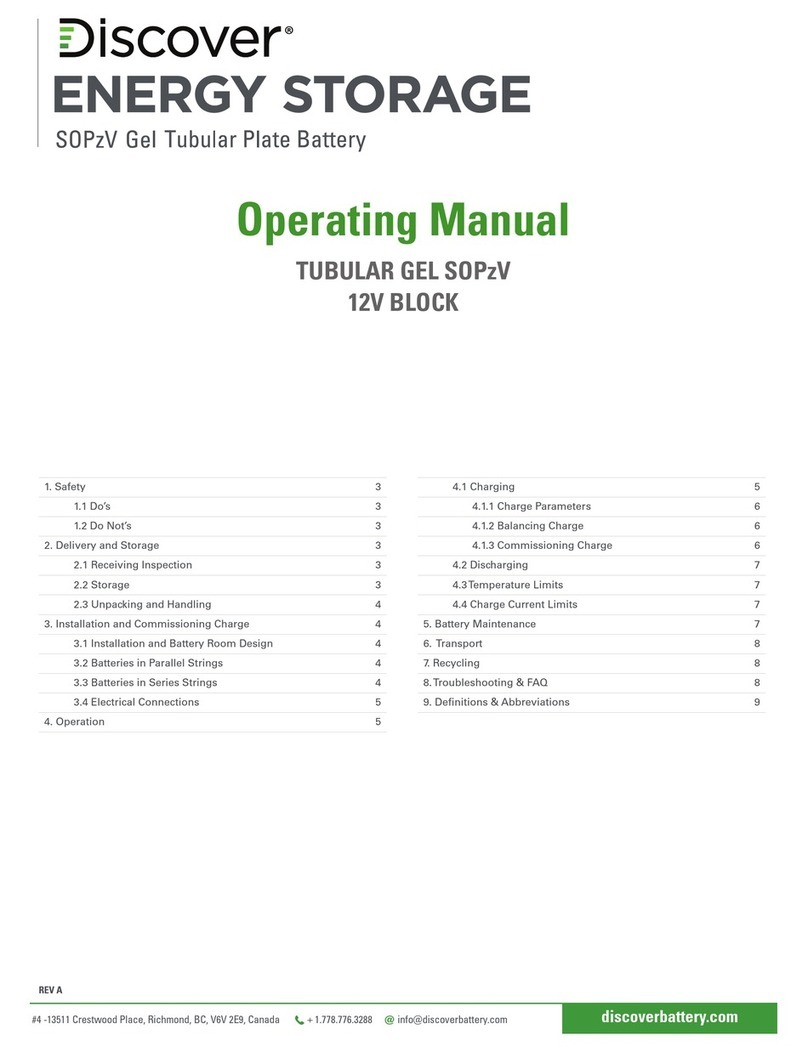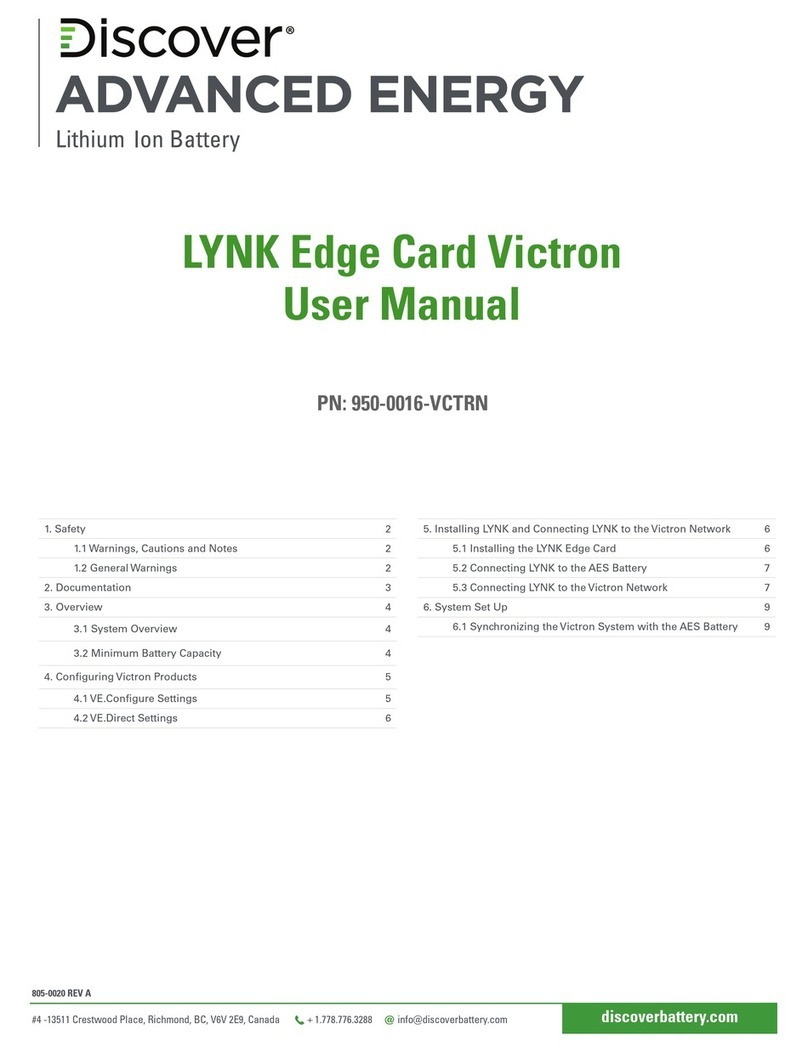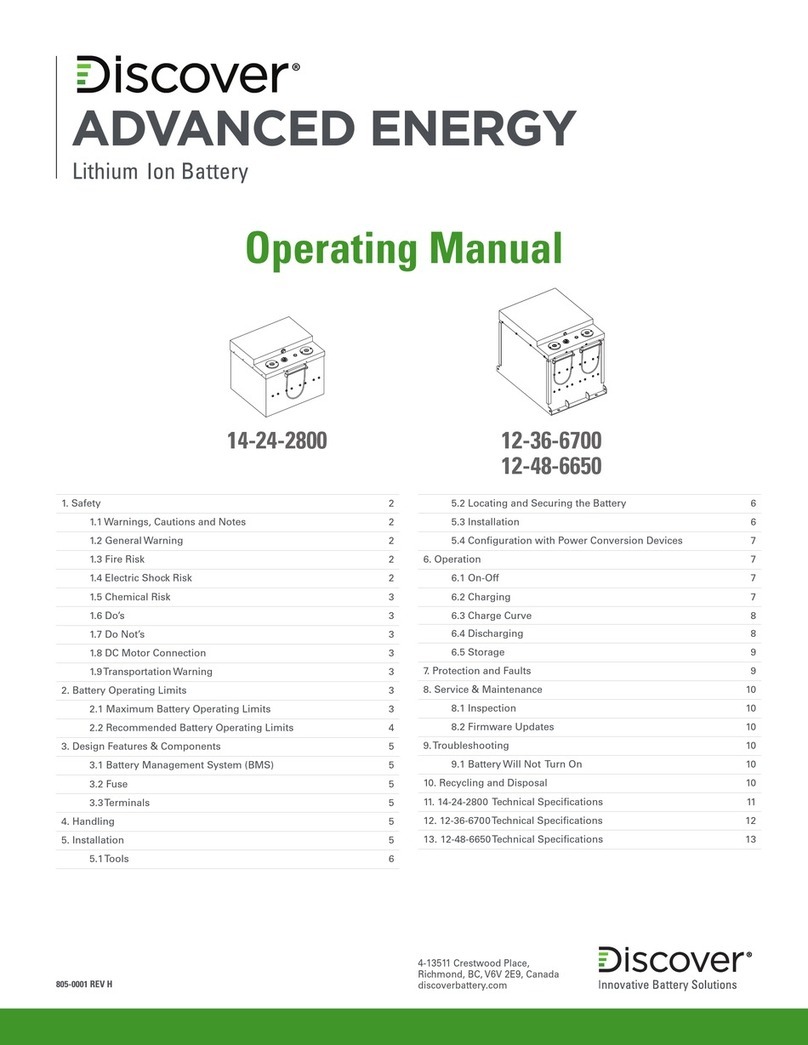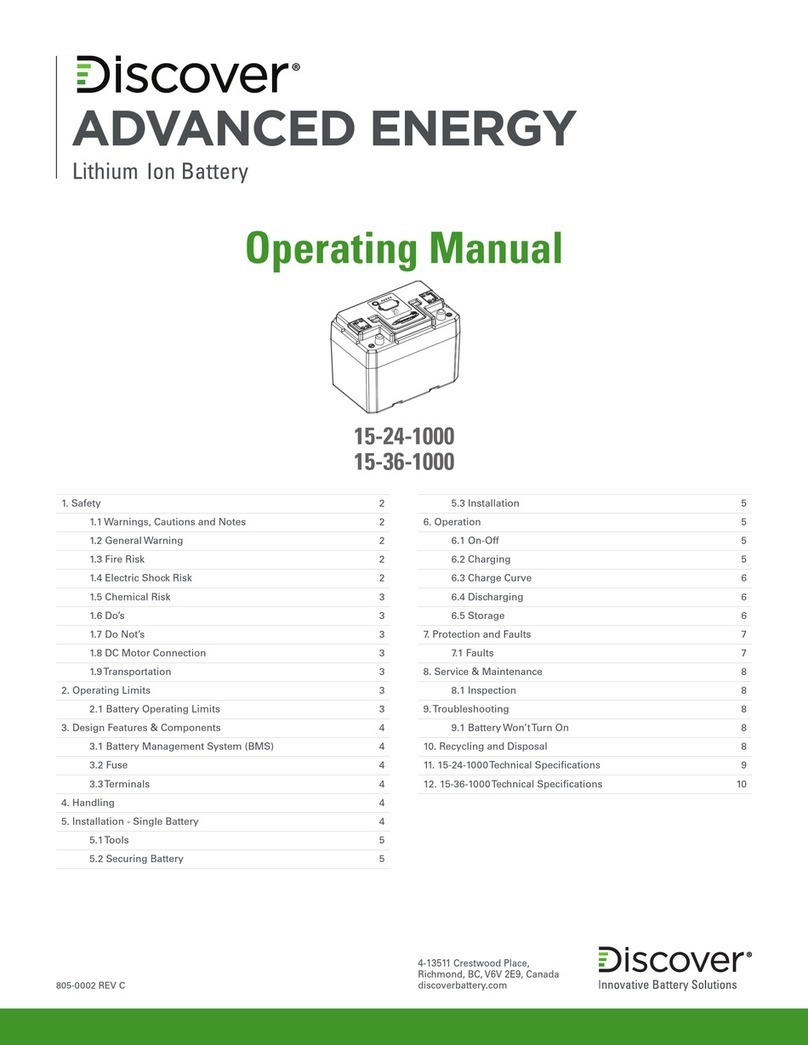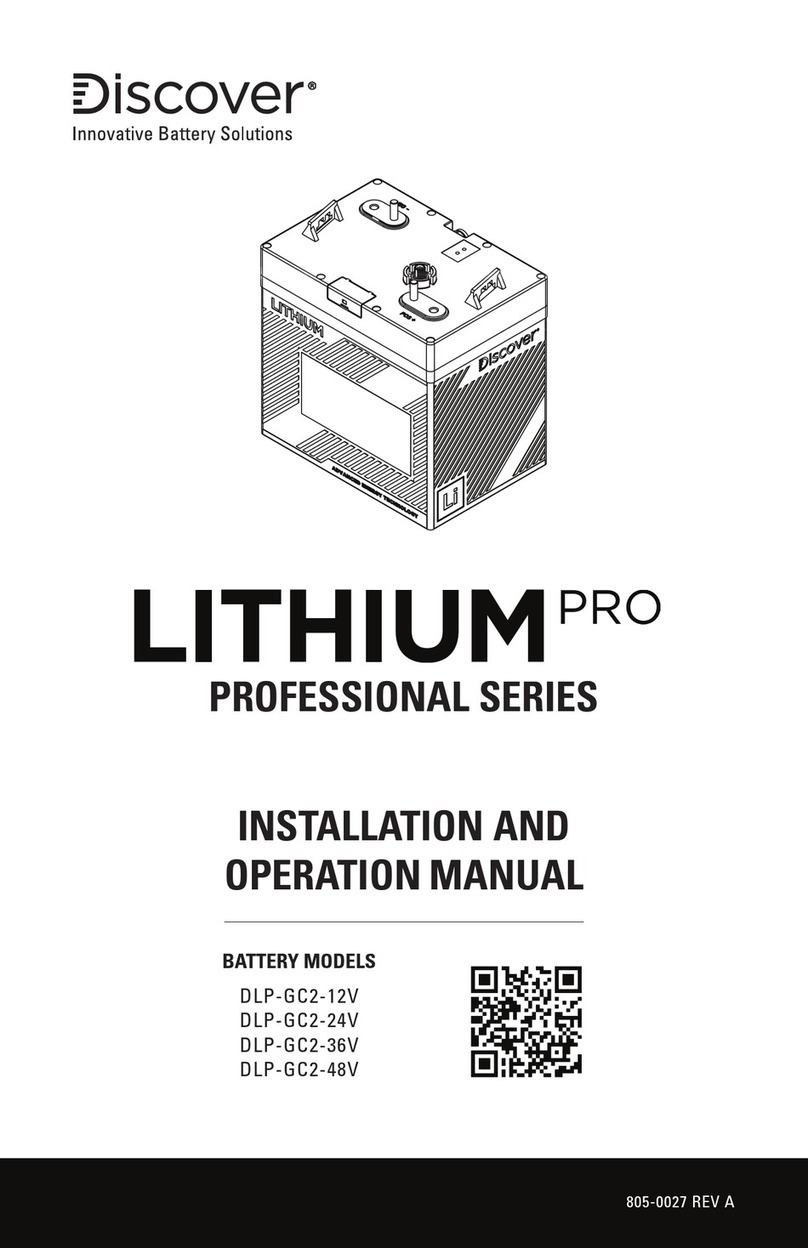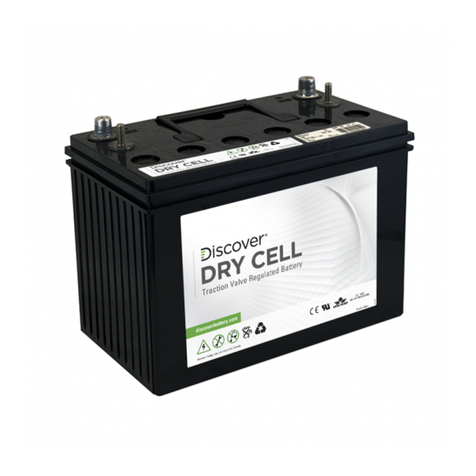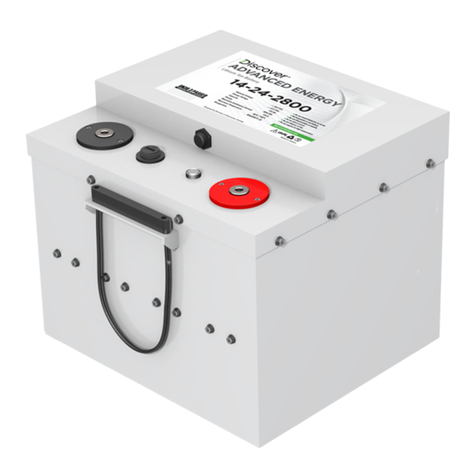
3
WARNING
Important information regarding hazardous conditions that may result in personal
injury or death.
CAUTION
Important information regarding hazardous conditions that may result in personal injury.
NOTICE
Important information regarding conditions that may result in damage to the
equipment, but not personal injury.
1. AUDIENCE, SAFETY, MESSAGES AND WARNINGS
1.1 Audience
Certain configuration, installations, service, and operating tasks should only
be performed by qualified personnel in consultation with local utilities and/
or authorized dealers. Qualified personnel should have training, knowledge,
and experience in:
• Installing electrical equipment
• Applying applicable installation codes
• Analyzing and reducing hazards involved in performing electrical work
• Installing and configuring batteries
1.2 Safety, Messages and Warnings
• Do not disassemble, open, crush, bend, deform, puncture or shred.
• Do not modify, re-manufacture attempt to insert foreign objects into
the battery, immerse or expose to water or other liquids, expose to
fire, explosion or other hazards.
• Only use the battery for the system for which it is specified.
• Do not lift or carry the battery while in operation.
• Only lift, move, or mount in accordance with local regulations.
• Take care when handling battery terminals and cabling.
• Only use the battery with a charging system that has been qualified for
the system.The use of an unqualified battery or charger may present a
risk of fire, explosion, leakage, or other hazards.
• Do not short circuit a battery or allow metallic conductive objects to
contact battery terminals.
• Replace the battery only with another battery that has been qualified
for the system.The use of an unqualified battery may present a risk of
fire, explosion, leakage, or other hazards.
• Promptly dispose or recycle used batteries in accordance with local
regulations.
• Avoid dropping the device or battery. If the device or battery is
dropped, especially on a hard surface, and the user suspects damage,
take it to a service center for inspection.
